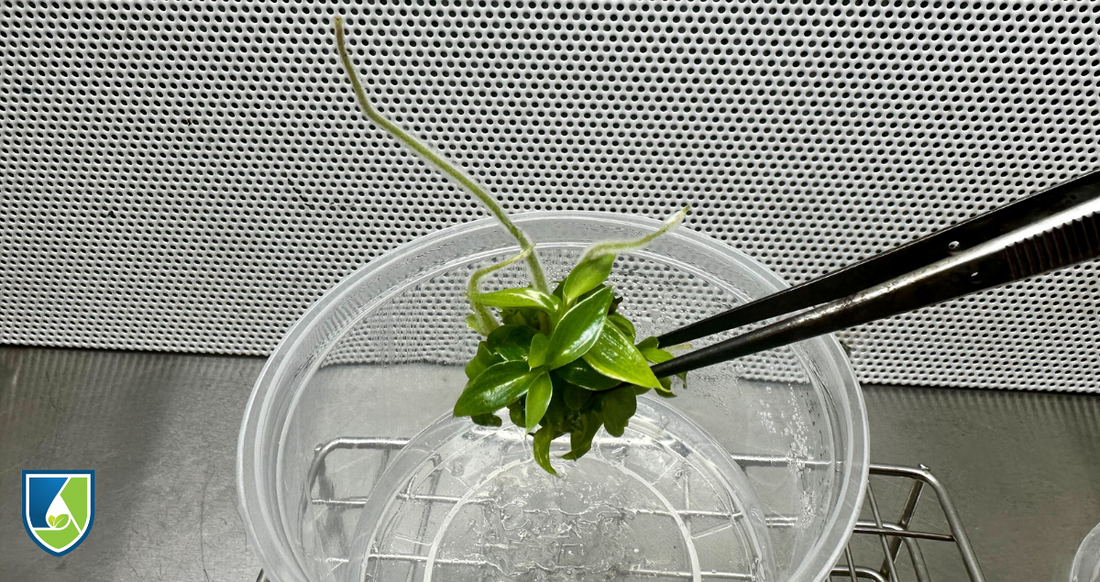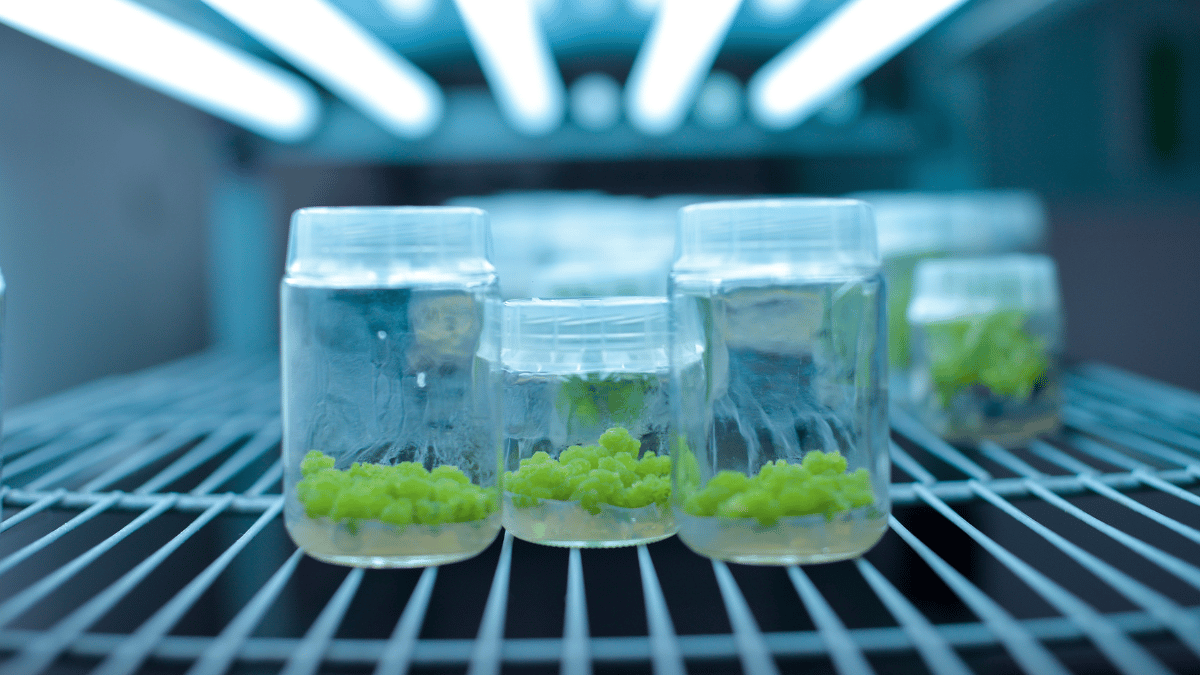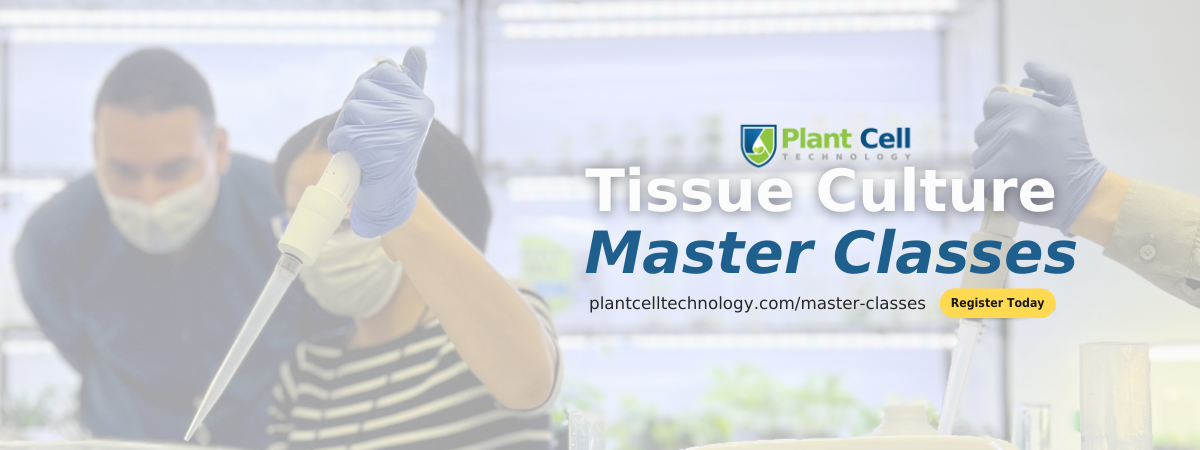
What is subculturing in tissue culture? With Tips and Insights
As a content and community manager, I leverage my expertise in plant biotechnology, passion for tissue culture, and writing skills to create compelling articles, simplifying intricate scientific concepts, and address your inquiries. As a dedicated science communicator, I strive to spark curiosity and foster a love for science in my audience.


Introduction
Plant tissue culture is a revolutionary technique that allows you to grow hundreds and thousands of plants just by using a few tissues in a small space. What is required is a few pieces of equipment and chemicals, a small room, aseptic conditions, a suitable physical environment with completely regulated temperature, humidity, and light, and the plant that you want to multiply in your lab.
Since its discovery by Haberlandt in 1902 the technique has become quite popular among large-scale businesses. Now, with enhanced accessibility of the method, it has become quite an attraction to hobbyists and small-scale growers too.
The technique is widely utilized not only because it requires a few tissues and small space, but also because of the numerous advantages it offers, such as:
- Production of disease-free plants
- Production of desired hybrids
- Production of haploids
- Conservation of endangered species
And, there is a list of other benefits that you can read in this blog.
The question is how exactly does this process lead to the m of hundreds of plants “just” by using a few tissues? The answer is through “subculturing, which will be talked about in this article, covering what it is, why it’s required, how it can be done, and how it affects your tissue culture process.

Image credit: Plant Cell Technology Plant Tissue Culture Master Class: Houseplants
What is subculturing in tissue culture?
Subculturing is the process of removing plant cells from their older media and transferring them to a fresh medium. This enables further proliferation of the cells. This is mainly done when plants have completely outgrown their previous culture jar or the media is exhausted (or both factors). In such cases, plant tissues are divided into small sections are transferred to fresh media. The number of times the subculturing process is done, it’s known as the “propagation cycle”.

Image credit: Plant Cell Technology Plant Tissue Culture Master Class: Houseplants
What is the purpose of subculturing?
Subculturing is done either at the initiation phase, where callus is transferred to a fresh media, and/or multiplication stage where shoots are divided and transferred to a fresh media. The process helps in the preservation of the dedifferentiated mass indefinitely.
You must know that the callus obtained from the original or initial explant is known as the primary callus. The primary callus is further dissected in the process and transferred to a fresh media, generating a secondary callus, which is generally used for the preservation purposes of tissues for a longer time. The process of successive dissection and transfer of callus to a fresh media is known as subculturing and the time between initiation and transfer is known as passage.
When regularly subcultured on an agar medium, callus culture demonstrates a distinct S-phase or sigmoid pattern of growth in each passage. The growth of callus can be categorized into five phases:
- Lag Phase: This is the initial phase where callus cells prepare for division.
- Exponential Phase: In this phase, the rate of cell division reaches its peak.
- Linear Phase: While cell division slows down, the rate of cell expansion continues to increase.
- Deceleration Phase: Both the rate of cell division and elongation gradually decrease.
- Stationary Phase: Here, the number and size of cells reach a stable and constant state.
Another thing to know is how many times one needs to subculture.
This differs from plant to plant. For some plant species, just three cycles are enough, for some others tissue growth and development in hindered at successive subculturing cycles. It’s observed that repeated subcultures of callus may reduce its regeneration ability. Therefore, it’s necessary to optimize the number and period of subcultures important to retain callus regeneration ability and higher callus biomass.
Let’s have a look at a few examples.

Image credit: Plant Cell Technology Plant Tissue Culture Master Class: Houseplants
Example 1
In this study of Callus Regeneration in Safed Musli (Chlorophytum borivilianum), it was observed that plants were doing great only until 3-4 subculture cycles.
How Was Subculturing Done?
- After the formation of the callus, the tissues were isolated and transferred to a fresh media (please have a look at this study for media composition of the plant if you’re interested in growing Musli. However, you must know that the media recipe and procedure for each plant differs based on their species.)
- Subculturing of callus was done at an interval of every 28 days (four weeks) for up to four subcultures.
- First subculture: Performed on Murashige and Skoog medium containing 5 mg/L 2,4-D. Higher growth of callus with a fresh weight of mean fresh weight of 10.65 ± 0.78 g was found within 4 weeks of culture.
- With the successive subculturing, an increased mean weight of callus was observed, with the fourth subculture having the highest fresh weight of 26.13 ± 3.18 g.
- After this, the callus was transferred to a shoot regeneration media.
The process of subculturing is essential to ensure good growth and development of the plant. In the absence of subculture, the callus will gradually die. The research suggests that subculturing noticeably improved callus growth without any changes in appearance. Further, an enhanced callus multiplication rate was observed during the subculture cycle.
However, you must know that some studies also suggest the introduction of somaclonal variation when plants are subcultured too many times.

Figure: Callus induction and subculturing of Safed Musli (Chlorophytum borivilianum).
Example 2
In this study of subculturing of Vitis vinifera L. cv. Napoleón, researchers observed that subculturing from more than 3 cycles affected the growth and development of plant tissues.
Subculturing Conditions
MS media supplemented with 30 g l-1 sucrose and 7 g l-1 agar and different concentrations of BA, with a pH of the media adjusted to 5.8, was used to subculture plant tissues. The plants were incubated in a controlled climate chamber for 45 days at 23 ± 20C and with a photoperiod of 16 hours. The light was provided by fluorescent tubes of white light in a controlled climate chamber for 45 days at 23 ± 20C and with a photoperiod of 16 hours. The light was provided by fluorescent tubes of white light (light intensity of 3035 µEm-2s-1). The relative humidity varied between 55 and 60%.
Results Observed
- The sprouting rate of axillary buds remained stable (around 90%) during the four subcultures made on media containing 4.4 µM BA, with a slight tendency to increase as the number of transfers grew.
- On media with 8.9 µM BA, vitrification in the third subculture affected 31% of explants and in the fourth subculture 45%.
- At 6.67 µM BA, vitrification was about 15% in the last two subcultures.
- With 2.22 µM BA, the sprouting percentage of axillary buds rapidly decreased to reach 10% after four subcultures.
Conclusion
- The production of axillary buds increased significantly at high cytokinin concentrations up to the third subculture, after which it sharply declined.
- The problem of vitrification, a kind of tissue damage, became more noticeable during the third and fourth rounds of subculturing, especially with high BA concentrations (6.67 and 8.9 µM). This suggests that too much cytokinin might be causing this issue.
- Other factors, including the presence of ethylene, high humidity levels within the culture container, the composition of agar and specific ions, and the duration of transfers, among others, might also contribute to this phenomenon.
- For the plant, researchers suggest limiting the number of propagation cycles to three. However, it can be increased either by altering BA concentration or reducing the subculture period.
- Transferring micro-cuttings to new media preserved sprouting rates and significantly boosted the yield of shoots and axillary buds per explant, reaching its peak by the third subculture.
 Image credit: Plant Cell Technology Plant Tissue Culture Master Class: Houseplants
Image credit: Plant Cell Technology Plant Tissue Culture Master Class: Houseplants
Subculturing Tips
- Avoid cultures from running out of media. Always subculture them after 70% of the media is utilized or after a fixed interval of days suitable for a particular culture.
- Find what number of subculture cycles is suitable for your plants. It’s important as after a certain subculturing number, the plant tissue growth and development are hindered and you might observe symptoms like the appearance of vitrified shoots, reduction in the propagation capacity of the axillary bud cultures, shoot elongation inhibition, and accelerated aging.
- Consecutive subcultures in media rich in cytokinin enhance the growth rates of various plant species. However, there is a potential risk of the cultures degenerating and a higher chance of somaclonal variation.
How To Subculture Plants?
If you are interested in learning more about how to do subculturing and watch an expert performing the process, we have the blog you are looking for! This blog maps out the step-by-step procedure of subculturing of Staurogyne repens. Attached you will also have videos on subculturing the plant where you can see our lab director Francisco Palacio in action. (If you are looking to get some insights on maintaining the aseptic environment in the lab, do not forget to check the end of the article)!
If you are interested in learning more about the subculturing process for different plants, here are some resources that you may find useful:
- In vitro shoot multiplication as influenced by repeated subculturing of shoots of contemporary fruit rootstocks
- Influence of Plant Growth Regulators and Subculturing on In Vitro Multiplication of Some Fig (Ficus Carica) Cultivars.
- Effect of sequential subcultures on in vitro proliferation capacity and shoot formations pattern of pineapple (Ananas comosus L. Merr.) over different incubation periods
- Effects of Long-Term Subculture on Maturation Ability and Plant Conversion in Pinus radiata: Using FT-IR Spectroscopy to Determine Biomarkers of Embryogenic Tissue Aging
- Influences of Subculturing Period and Different Culture Media on Cold Storage Maintenance of Populus Alba X P. grandidentata Plantlets
- Effects of Subculturing and Physical Condition of Medium on the Nuclear Behavior of a Plant Tissue Culture

Get Your Subculturing Requirements at Plant Cell Technology!
Whether you are looking for MS media, Cytokinins (BAP or TDZ), Solidifying agents (agar or gellan gum), or any other chemical or tissue culture equipment for your subculturing process, Plant Cell Technology has everything in its store.
Plant Cell Technology is helping tissue culturists around the world by providing unique and world-class products and services that smoothen their process. Furthermore, we provide consultations for those facing challenges at any stage of their tissue culture endeavors. This gives you the opportunity to directly converse with a tissue culture expert about your issues and receive immediate solutions.
If you are a beginner navigating your way through tissue culture, our comprehensive master classes serve as an excellent resource to educate yourself in the field and kickstart your journey. Our experts cover everything in the class, from basic principles to advanced procedures. Moreover, you get hands-on practice with our instructors to learn the exact execution of experiments and understand the dos and don'ts during the process.
Plant Cell Technology is your one-stop shop for all your tissue culture needs. So, don't wait any longer; explore our products and services here, and feel free to reach out to us at info@plantcelltechnology.com for any queries or concerns.
Happy Culturing!!
Blog Categories
View by Level
Popular Blogs

Callus Culture: Definition and Applications
Introduction Tissue culture is not just one technique! Yes, you heard right! As you know, tissue culture is an advanced...
Read More
6 Plant Tissue Culture Books to Keep Learning
Introduction Most of us are fans of books when it comes to learning a topic in detail and in a...
Read MoreSubscribe to Our Newsletter








Join the conversation
Your email address will not be published. Required fields are marked